Gold prices slide further as easing US-China tensions curb haven demand
Introduction & Market Context
Brookfield Renewable Partners L.P. (NYSE:BEP) released its first quarter 2025 supplemental information on May 2, 2025, highlighting continued growth in funds from operations (FFO) despite a widening net loss. The renewable energy giant reported a 7% year-over-year increase in FFO to $315 million, supported by significant capacity expansion and strategic investments across its global portfolio.
The company’s performance comes amid strong demand for renewable energy, particularly from the technology sector. According to the recent earnings call, Brookfield Renewable has positioned itself as a leading partner for major technology firms seeking to secure clean energy sources for data centers and AI infrastructure.
Quarterly Performance Highlights
Brookfield Renewable reported FFO of $315 million ($0.48 per unit) for Q1 2025, representing a 7% increase from the prior year. Normalized FFO reached $338 million ($0.51 per unit), up from $308 million ($0.46 per unit) in Q1 2024. However, the company also recorded a net loss attributable to unitholders of $197 million, which widened from $120 million in the same period last year.
As shown in the following comprehensive financial overview, the company’s total generation increased to 30,476 GWh from 22,933 GWh in Q1 2024, while total capacity expanded by 29% to 43,284 MW:
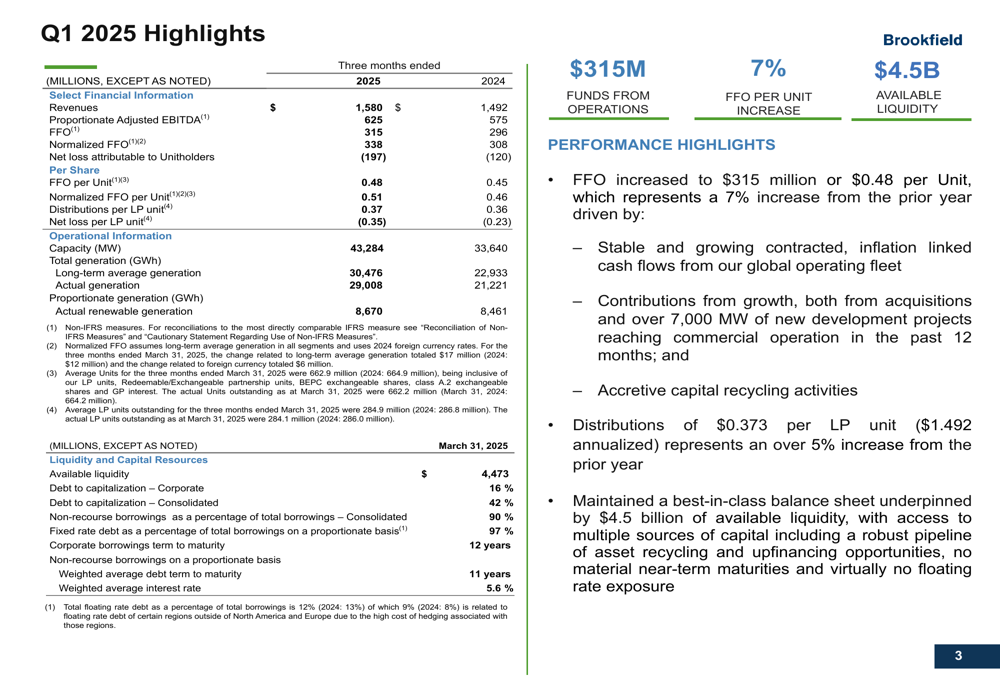
The growth in FFO was primarily driven by stable and growing contracted, inflation-linked cash flows, contributions from acquisitions, and the commercialization of approximately 7,000 MW of new capacity. The company maintained a strong balance sheet with $4.5 billion in available liquidity and increased its quarterly distribution to $0.373 per LP unit ($1.492 annualized), representing over 5% growth from the prior year.
Brookfield Renewable’s operational achievements during the quarter included securing contracts for approximately 4,500 GWh of clean power per year and maintaining a portfolio that is 90% contracted with an average term of 14 years, with 70% of revenues indexed to inflation.
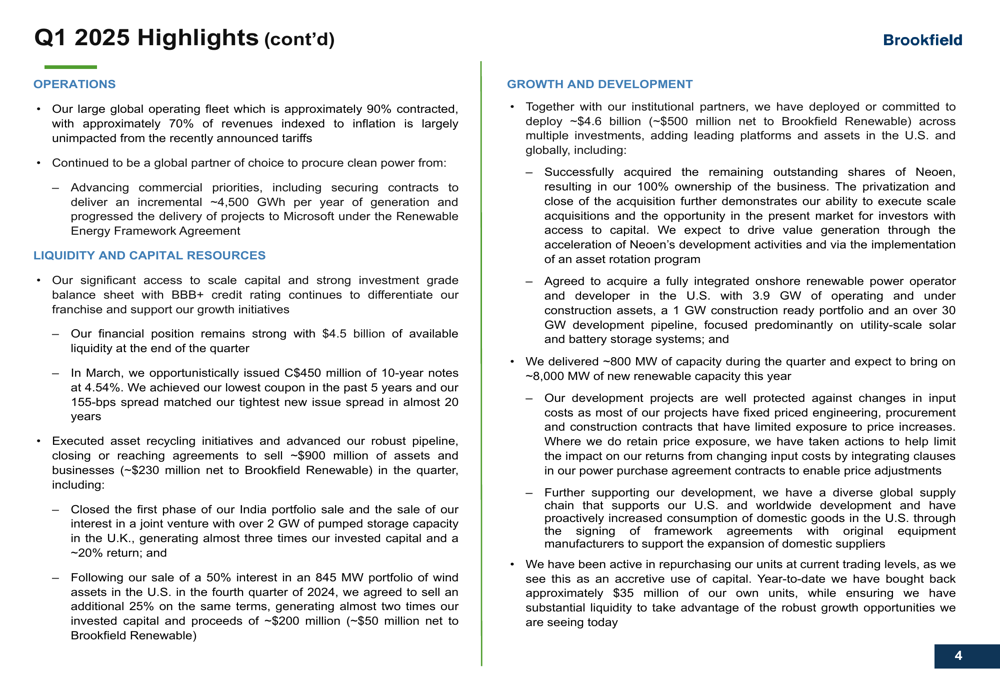
Strategic Initiatives
During Q1 2025, Brookfield Renewable deployed approximately $4.6 billion across multiple investments, including the privatization of Neoen (EPA:NEOEN). The company also agreed to acquire a fully integrated onshore renewable power operator and developer in the United States, which includes 3.9 GW of operating capacity, 1 GW of construction-ready projects, and a 30 GW development pipeline.
The company delivered approximately 800 MW of new capacity during the quarter and expects to bring approximately 8,000 MW online throughout 2025. Brookfield Renewable also executed asset recycling initiatives totaling approximately $900 million, including the sale of its India portfolio and a joint venture interest in the UK.
The company’s global presence spans five continents with operations in approximately 35 power markets across 25 countries, as illustrated in this regional breakdown:

Brookfield Renewable’s portfolio includes 8,079 power generating facilities with a total operating capacity of approximately 43,300 MW. The company’s assets are diversified across various renewable technologies, with a strong focus on established renewable sources.
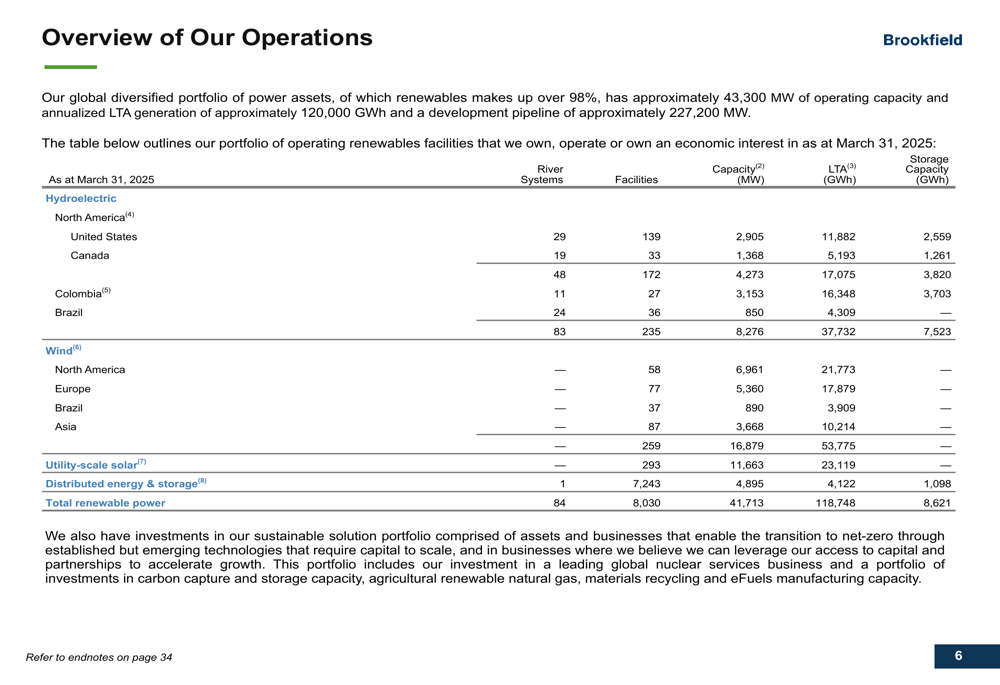
Detailed Financial Analysis
Brookfield Renewable’s cash flows are well-diversified across technologies and regions, with established renewable technologies comprising 90% of FFO on a proportionate basis. The company’s geographic diversification shows a strong presence in developed markets, which account for 75% of FFO.
As shown in the following chart of FFO distribution, wind energy represents the largest segment at 47%, followed by distributed energy at 21%, hydroelectric at 16%, utility-scale solar at 9%, and sustainable solutions at 7%:

The company has demonstrated a strong track record of growth, with FFO increasing at a compound annual growth rate (CAGR) of 11% and FFO per unit growing at 8% CAGR since 2012:
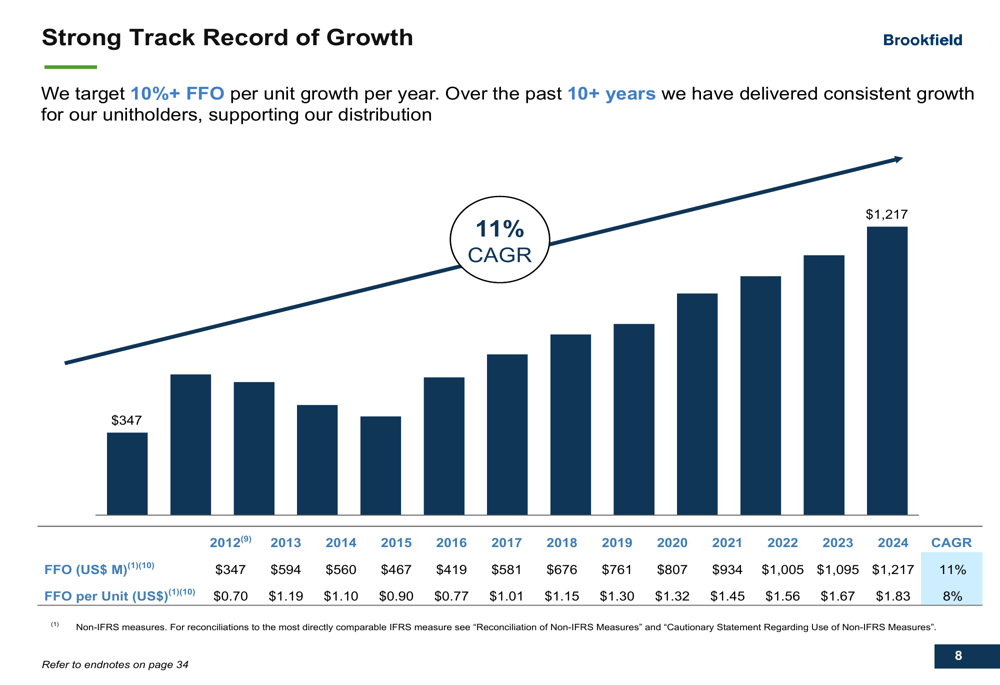
Distributions have also shown consistent growth, with a 6% CAGR since inception in 2001. The company targets a long-term distribution growth rate in the range of 5% to 9% annually:

Segment performance for the quarter showed mixed results. The hydroelectric segment generated $163 million in FFO, down from $193 million in Q1 2024, primarily due to lower generation in North America. The wind segment’s FFO remained relatively stable at $86 million compared to $87 million in the prior year, while utility-scale solar contributed $63 million, up from $61 million. The distributed energy and storage segment saw a significant increase in FFO to $114 million from $34 million, while sustainable solutions FFO decreased to $12 million from $33 million.
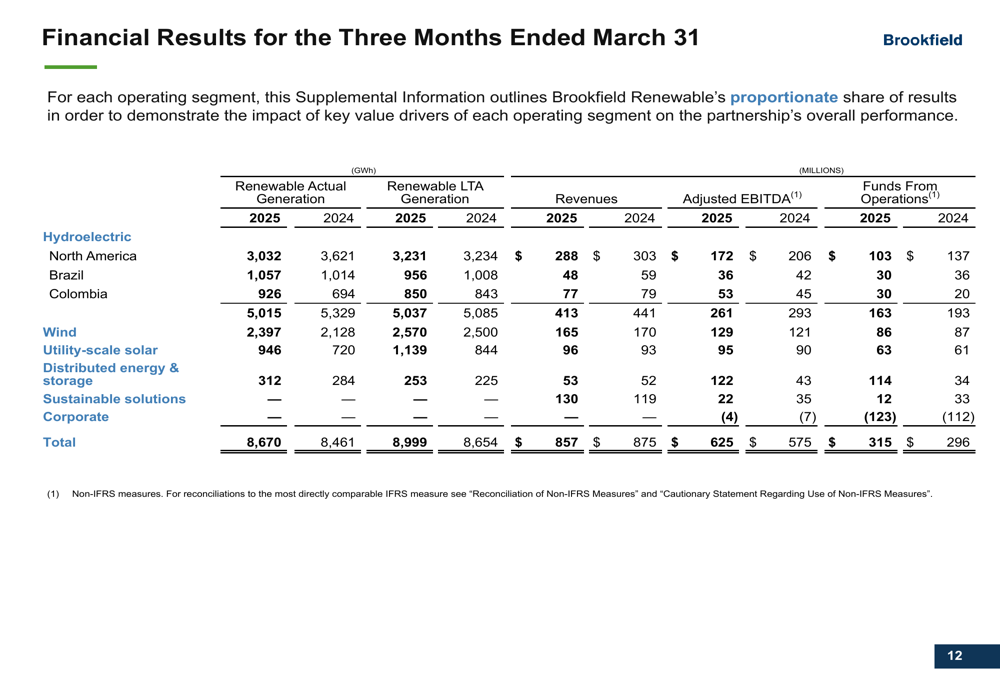
Forward-Looking Statements
Brookfield Renewable maintains a target of 10%+ FFO per unit growth per year, supported by its diversified portfolio, strong balance sheet, and extensive development pipeline. The company’s financial position remains robust with $4.5 billion in available liquidity and a well-structured debt profile, with 97% fixed-rate debt and weighted average terms of 12 years for corporate borrowings and 11 years for non-recourse borrowings.
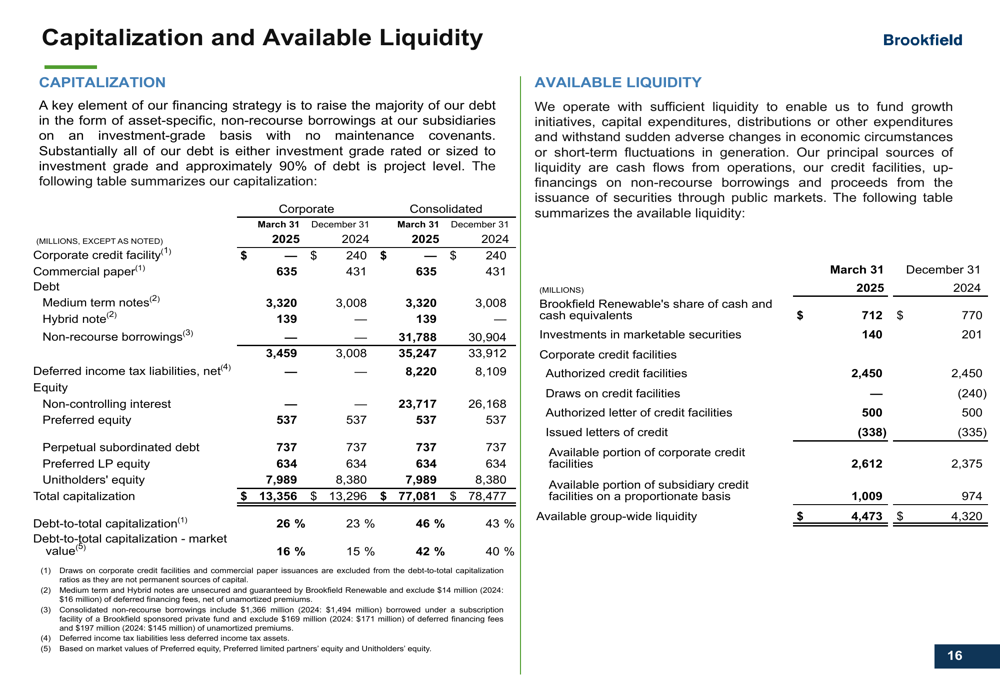
According to the recent earnings call, Brookfield Renewable is focusing on expanding its presence in the digital and AI sectors, with a landmark renewable energy agreement with Microsoft (NASDAQ:MSFT) set to deliver over 10.5 gigawatts of new renewable energy capacity across the US and Europe from 2026 to 2030. The company’s capital recycling initiatives are on track, with a target of $1.3 billion in net proceeds for 2025.
Brookfield Renewable’s strategic positioning as a global leader in decarbonization, combined with its inflation-linked contracted cash flows and strong development pipeline, provides a solid foundation for continued growth despite the challenges reflected in its widening net loss. The company’s focus on aligning with the technology sector’s growing demand for renewable energy appears to be a key driver of its forward strategy.
Full presentation:
This article was generated with the support of AI and reviewed by an editor. For more information see our T&C.
